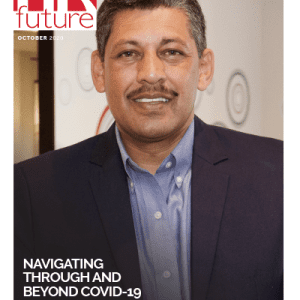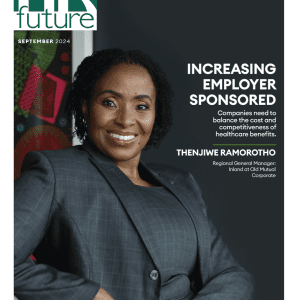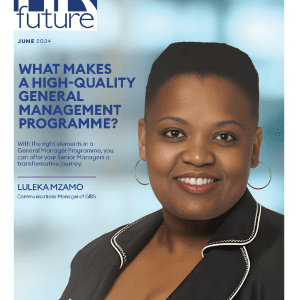One of the most urgent issues for organisations in 2014 will be how leaders can effectively target, nurture and advance top talent in their organisations. Note however the crucial shift in emphasis from a broad-based need for all top talent to an increasing demand for the right kind of talent.
In a recent article by Sylvia Ann Hewlett in Harvard Business Review she points out that while leaders have long recognised that an inherently diverse workforce confers a competitive edge in selling products or services to diverse end users, recent research by the global Centre for Talent Innovation (CTI) has now shown that on top of that, an inherently diverse workforce can be a potent source of innovation. Reason being that diverse individuals seem to be better attuned to the unmet needs of consumers or clients like themselves.
The question is how can leaders leverage and develop diverse talent?
It is important to first qualify the meaning of talent. Talent is what makes an organisation succeed, yet there’s often confusion about the definition of talent. ‘Talent’ is not necessarily an individual with a list of all the right qualifications. Talent refers rather to people who bring a unique configuration of 10 000 hours of experience; who subscribe and align to the company culture and who are able to make a quick conversion of their 10 000 hours to add value to the organisation”.
Winning organisations will be those who embrace the following four principles to attract and retain this diverse talent:
Inclusivity
Understanding a diverse workforce is key to a successful business. However, diversity only works if it is managed by leaders who are inclusive of difference. The CTI research says that to continually drive growth and innovation one needs a diverse workforce managed by leaders who cherish difference, embrace disruption and foster a speak-up culture. Promoting a culture of inclusivity means being inclusive across the board. It should not be limited to a particular group that’s asking to be included. In fact, an organisation should be inclusive of all constituents who have a vested interest in the organisation. This includes your shareholders, customers, the broader community, the public, the employees and leaders. Different groups of people, including multi-generational as well as multi-cultural groups, like to engage in dialogue and be included in different ways – and leaders need to figure out ways to embrace this inclusively.
Sponsorship
Another interesting development, sponsorship, refers to a strategic workplace partnership between those with power and those with the potential to become powerful. Sponsors are essentially people in positions of power who work on behalf of their protégé’s to clear obstacles for them, foster connections, assign higher-profile work to ease the move up the ranks and provide support in case of stumbles. Sponsorship, like mentorship, is the basis of developing and keeping talent. Some people may not need mentoring but sponsorship on the other hand can help to fast-track them through the ranks of an organisation. The reality is that talented people who aren’t sponsored will get frustrated with all the obstacles experienced in organisations today and ultimately leave. We also believe internal training has a ceiling, while sponsorship takes talent development to the next level. The CTI research also shows that by building a dedicated team of talent, sponsors see a measurable benefit to their own careers too and show much higher levels of satisfaction than those who have not built the base of support. It is important to realise that the rewards of the sponsor-protégé relationship don’t end with a big promotion – they last throughout a career.
Visibility
Visibility of a leader is possibly one of the most important factors in leadership. CTI research shows that performance, hard work and sponsors get top talent recognised and promoted, but that “leadership potential” isn’t enough to leverage men and women into the executive suite. Leadership roles are given to those who also look and act the part who manifest “executive presence”, which is done by people watching and modelling the behaviour of their leaders. Yet paradoxically, in South Africa, the system conspires against itself because our top executives and leaders are generally hidden away on the top floor of a building or behind a private elevator. How do you model what you can’t see? It is time for leaders to come out from behind those closed doors and be seen become the role models that are so essential for talent and leadership development.
Create ecstatic employees
For over 20 years, the taught and accepted business model for both employee satisfaction and customer satisfaction was based on a bell curve. The traditional thinking was that in any company at least a small group, let’s say 20% of people, are unhappy at work, the majority of people are happy but not ecstatic, and the balance of the group, again approximately 20%, are ecstatic. If one ran a similar curve based on customer satisfaction it would reflect the same profile, and until recently this was the accepted norm for both customer and employee engagement and loyalty employee engagement and loyalty. But how can this be healthy?
Within the traditional bell curve model an organisation runs the risk of at least 80% (20 % unhappy + 60% happy-ish) of employees or customers defecting as soon as they find a better alternative. Only the small 20% are genuine advocates of the brand or the company. Surely a better distribution would be to have 80% of your people fully engaged and passionate about their work or 80% of customers who are avid fans to your brand. In 2014 this is definitely what we need to work towards. We want to create more active company or brand allies and build a reciprocal ‘I’ve got your back’ culture in an organisation where all workers, regardless of their religious denomination, sexual preference, race and culture and gender difference, workers feel accepted, valued and comfortable being who they are. Leaders who are active allies, are far more likely to retain diverse talent.
The CTI research further shows that the majority of workers fail to realize their full potential because their leadership lacks the inclusive behaviour needed to effectively unlock the innovative potential of an inherently diverse workforce. Leaders who decide to inculcate behaviour and disseminate practices that endorse, encourage and empower all people within an organisation are far more likely to both retain a broader spectrum of top talent as well as tap into an ever-replenishing well of innovation.
Natalie Maroun is the Managing Director at LRMG.


























